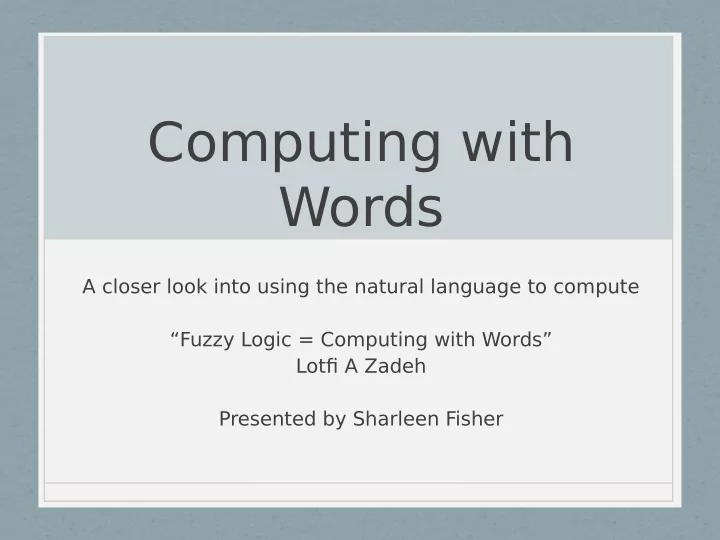

Computing with Words A closer look into using the natural language to compute “Fuzzy Logic = Computing with Words” Lotfj A Zadeh Presented by Sharleen Fisher
What is granularity? • Granule: A cluster of points grouped by similarity • A word w is a label of a granule g • T wo types of data: • Atomic data: Singular and indivisible • Composite data: Comprised of multiple components
What is CWW? • Rooted in: • Linguistic variables and granulation • “Outline of a new approach to the analysis of complex systems and decision processes,” IEEE Trans. Syst., Man, Cybem., vol. 3, L. Zadeh • Concepts of fuzzy constraint and fuzzy constraint propagation • “Calculus of fuzzy restrictions,” in Fuzzy Sets and Their Appli- cations to Cognitive and Decision Processes , L. A. Zadeh, K. S. Fu, M. Shimura • “A theory of approximatereasoning,” Machine Intelligence 9, J. Hayes, D. Michie, and L. I. Mukulich
A Basic Problem
Canonical Form • Formal expression of a mathematical object • In this case, an object of natural language • X: Constrained variable • R: Constraining fuzzy relation
Explanatory Database • A collection of relations including: • Names • Attributes • Domains • Returns constrained variable X and the constraining variable R • EDI = Explanatory Database Instantiated
Canonical Form Conversion p = M a r y i s n o t v e r y y o u n g .
A More Complex Canonical Form Example
Constraints
Conjunctive Example • Conjunctive: Expresses if grade of membership of u in R is m , then X = u has the truth value m Profjciency(John) isc (Fluent/English + Semi-Fluent/French + Basic/German)
Fuzzy Constraint Propagation • Rules of Interference in Fuzzy Logic • Rules Governing Fuzzy Constraint Modifjcation
Application of CWW • “Computing with Words Using Fuzzy Logic: Possibilities for Application in Automatic T ext Summarization” (2007), Shuhua Liu
Questions?
Recommend
More recommend